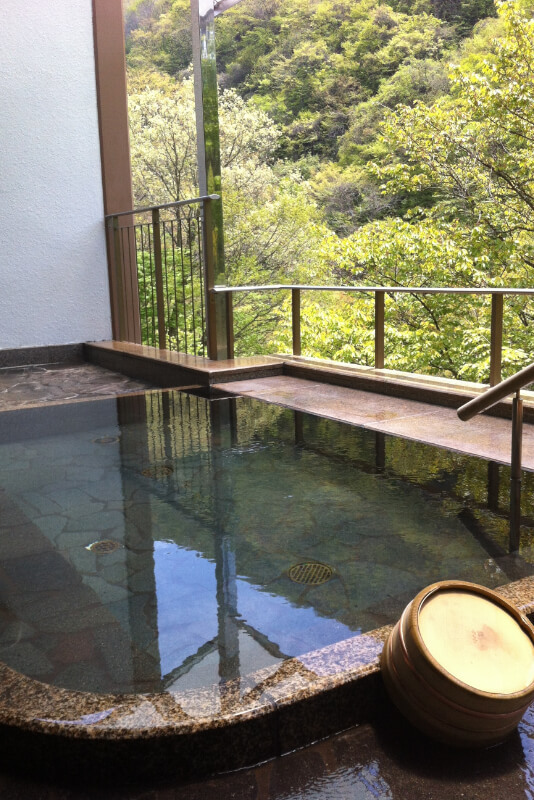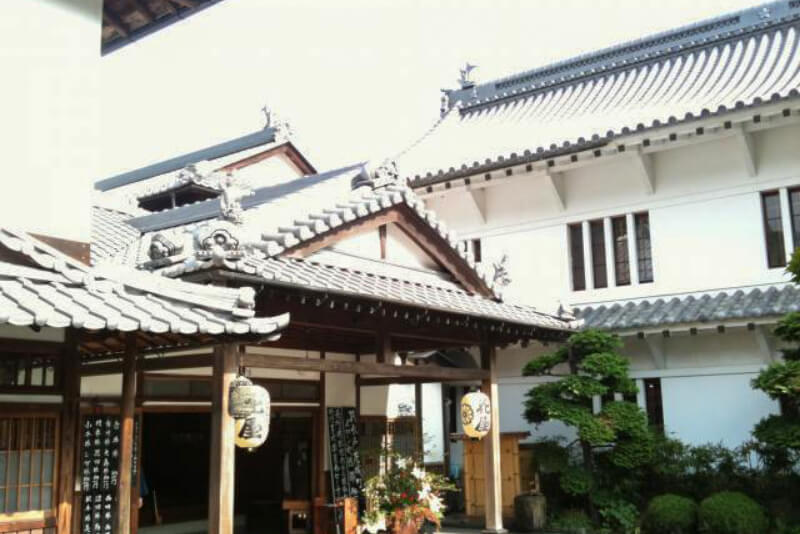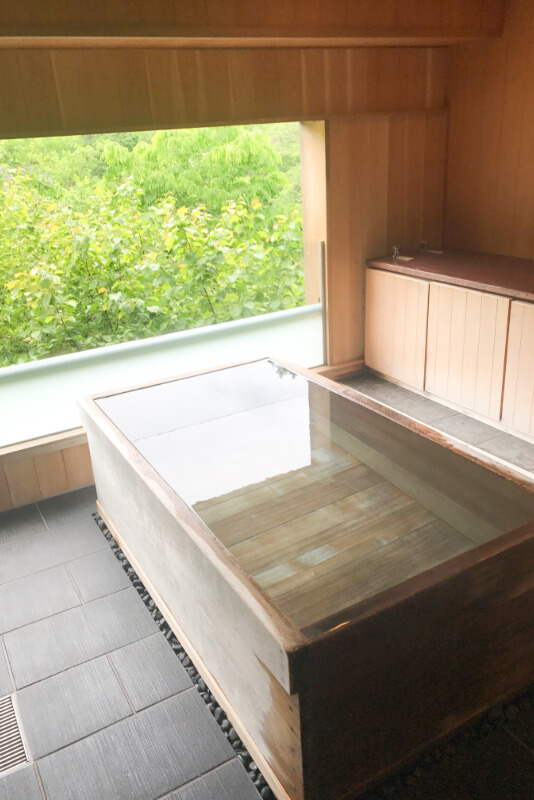An Ode to Nagano’s Grandest Ryokans (Traditional Japanese Inns)
Twelve suggestions for fully experiencing Japanese culture through a ryokan stay
Update:2020/01/17

For many visitors to Japan, the highlight of their trip is a stay at a traditional Japanese inn called a ryokan. It’s an immersion into Japanese culture, through relaxing in a traditional straw tatami-mat room with paper shoji screens and decorative tokonoma alcove, lounging in a light cotton yukata robe, soaking in a rejuvenating bath and indulging in a sumptuous feast of elegant Japanese food, before sleeping on the soft futon bed spread out on the floor.
But how do you choose which ryokan, or moreover, what type? These inns come in every style imaginable, from Edo-era wayfarer’s lodging with paper-thin walls to modern renditions with hi-tech amenities, and from family-run inns with only a few rooms to all-inclusive sprawling resorts. Some serve Japan’s elaborate ‘haute-cuisine’ kaiseki-style dinner, and most have hot spring mineral baths (onsen). Nagano Prefecture alone has over one thousand ryokans located everywhere from bustling urban onsen resort towns to quiet remote solitary inns deep in the mountains.
Here are a dozen of Nagano’s most notable ryokans to give you an idea of the variety of choices.
Sakaya Ryokan (Nozawa Onsen)
Magnificent Bath House, Quaint Onsen Village

Located in the center of the onsen village of Nozawa Onsen, Sakaya Ryokan is a family-owned, medium-sized, fairly modern ryokan that can accommodate up to 130 people. What sets Sakaya Ryokan apart from the other 20 inns in the village is its signature Taka no Yu (Hawk’s Bath) indoor bath. The bath itself is separated into 3 sections so guests can enjoy the varying temperatures, but it is the bath house’s awe-inspiring sturdy post and beam wood construction that leaves the biggest impression.
Nozawa Onsen Village
The village of Nozawa Onsen is at the foot of its eponymous ski resort and befitting of its location it gets inundated with snow in the winter. Local farmers operate their houses as bed and breakfasts during the white season to accommodate the influx of skiers. Nozawa Onsen boasts over 30 onsen sources including the village’s symbol, the ‘Ogama’ onsen pool that locals use as their shared kitchen.

There are 13 public bath houses where the hot spring mineral water, rich in sulfur content and tingling hot, can be enjoyed. The grand-daddy of the 13 is O-Yu, located adjacent to the afore-mentioned Sakaya Ryokan and sharing its onsen source.

Yorozuya (Shibu-Yudanaka Onsen)
Classic Bath, Extravagant Garden Bath, Rustic Guest Rooms
Among the 30 inns in the Yudanaka side of this pair of onsen resort towns, Yorozuya stands out with the historical architecture of its Momoyama Bath, a massive outdoor bath with a sumptuous formal garden, and the venerable Shoraiso guestroom wing. Built by ‘miya-daiku’ temple carpenters with Edo-period design, the Momoyama Bath is on the national Tangible Cultural Property registry, and is recognized as one of the top baths in all of Japan.

Not to be outdone, the adjacent outdoor bath is larger than most garden ponds, and is surrounded by a gorgeous Japanese garden replete with enormous stone lanterns.

Besides the onsen baths, Yorozuya’s main pride and joy is Shoraiso. Also registered as a national Tangible Cultural Property, this 3-story wooden building has 2 floors of guest rooms and a banquet hall on the top floor.

The historical architecture and intricate craftsmanship are a joy to behold, and are certainly worthy of their status as an Important Cultural Property.
Kanaguya (Shibu-Yudanaka Onsen)
Like From an Anime Movie
In the center of the Shibu-side of this twin-onsen resort town is the venerable Kanaguya. Also listed on the national Tangible Cultural Property registry, Kanaguya’s 4-story wooden building constructed in 1936 is an architectural marvel like something out of an anime movie. The craftsmen included numerous intricate details that are described by the walking tour Kanaguya provides its guests. The tour also showcases the inn’s 4 different dedicated onsen sources. At night, the façade is lit up in such a way as to further enhance its architectural beauty – a sight not to be missed.
Shibu Onsen
Shibu Onsen and its neighbor Yudanaka Onsen are famous for being the gateway to Jigokudani Wild Monkey Park of the world-famous snow monkeys. Both are renowned for an abundant supply of especially hot onsen mineral water. Shibu Onsen in particular has a beautiful townscape with narrow, cobble-stone streets lined by historical wooden inns, the most spectacular of which is Kanaguya.
Aburaya (Shibu-Yudanaka Onsen)
Modern Comfort and Style
Lest you get the impression that all of Nagano’s ryokans are historical monuments, allow us to introduce Aburaya. While maintaining its ryokan essence with Japanese-styled tatami mat rooms, elegant kaiseki-style meals and – of course – luxurious onsen baths, Aburaya-Tousen (as it is formally known) is a fully modernized inn with all the associated comforts. There’s even a stylish roof-top lounge that adds an extra touch of class which accentuates Aburaya’s contemporary ryokan composition.
Fujiiso (Yamada Onsen)
Nestled in a Picturesque Gorge
Deep in the mountains east of Nagano City is the town of Shinshu Takayama, famous for the Matsukawa Gorge and the handful of ryokans at Yamada Onsen. One inn in particular, Fujiiso, takes full advantage of the forest setting. The entrance lobby has a picture window looking out on to the gorge, and even has a line of comfortable chairs facing out, inviting guests to relax and absorb the dreamy view. Fujiiso’s onsen baths offer the same scenery, with no buildings, electric lines or other signs of civilization disturbing the natural setting, a setting further enhanced with the brilliant colors of fall foliage.

Another especially noteworthy ryokan in Yamada Onsen is Fukeikan, legendary for its cliff-hugging outdoor onsen bath.

Sasaya Hotel (Togura-Kamiyamada Onsen)
Classic Guest Rooms Fit for an Emperor
Sasaya Hotel’s eight-guestroom wing “Hohnen-Mushi” was designed by Arata Endo, a protégé of the renowned American architect Frank Lloyd Wright. Built in 1932 and a registered national Tangible Cultural Property, the guest rooms are a prime example of ‘sukiya’ design with each room detached from the others and surrounded by a garden. Many literary and political greats have stayed in these hallowed rooms. Endo’s design had a profound influence on ryokan architecture with the sunken sitting room common still today originating with Hohnen-Mushi.

Onsen Town Togura-Kamiyamada
Sasaya Hotel is the granddaddy of the 30 inns and hotels of Onsen Town Togura-Kamiyamada. The town is proud of its geisha heritage and 30-minute geisha shows can be arranged at your inn. Guests are also encouraged to wear their yukata robe and go for a walk with wooden geta sandals to shop at the various specialty stores, indulge in local food at one of the countless eateries, soak their feet in one of the 3 onsen foot baths, soak in an onsen at one of the 7 public bath houses, or at night play the ‘shateki’ shooting game or sing karaoke at a bar.

The town is located on the Chikuma River and features a popular bike path along the river.

Hanaya (Bessho Onsen)
Grandeur and Gardens, Distinctive Passageways
Yet another inn on the national Tangible Cultural Property registry, the venerable Hanaya in historical Bessho Onsen is remarkable for its open-air walkways connecting the various wings. The wood buildings and gardens retain the charm of the Taisho era a century ago when they were originally built. Sure the passageways are cold in the winter, exposed as they are to the elements, but no ferro-concrete modern building can come close to matching Hanaya’s exquisite atmosphere.


Historical Bessho Onsen
Bessho Onsen itself is a walkable onsen resort town at the end of the Bessho Line from Ueda City, and is famous for a collection of temples including Anaruku-ji with its 8-sided 3-story pagoda (a national treasure) and Kitamuki-Kannon which faces north, towards Zenkoji Temple in Nagano City and is often toured as a set by pilgrims to Zenkoji.

Awa-no-Yu (Shirahone Onsen)
Remote Valley, Milky-White Onsen
Hidden deep in the Northern Japanese Alps, in between massive Mt. Norikura and the enchanting Kamikochi Valley, is Shirahone Onsen, famous for its milky-white onsen water. ‘Shirahone’ means ‘white bone’ and the hot spring mineral water is high in sulfur content that oxides when it comes into contact with the air, creating a translucent bluish-white color. Legend has it that if you bathe in Shirahone’s hot spring water 3 days, you won’t catch a cold for 3 years.
Of Shirahone Onsen’s inns, Awa-no-Yu boasts the most-photographed outdoor bath of any ryokan in the Prefecture. It’s expansive bath which is co-ed (men and women mixed) is a prime example of Shirahone’s distinct onsen water, with its lush garden providing a colorful background.

Myojinkan (Tobira Onsen)
Solitary Inn with Refined Elegance
If you prefer quiet solitude rather than a bustling onsen resort town, then one of Nagano’s many secluded onsen inns may fit your preference. The remote yet refined Myojinkan is just such an inn. Even the journey there is part of the experience, as leaving central Matsumoto City deep into the foothills of the Utusukushigahara Plateau will take you far away from noisy civilization.

From carefully crafted kaiseki-style meals served one dish at a time, to onsen baths with views of the verdant surrounds, Myojinkan’s elegant hospitality is internationally renowned.

There might not be cell phone reception, and there certainly aren’t any ramen shops or karaoke bars in the vicinity but if you are looking for peaceful relaxation and want to commune with nature, then secluded, solitary inns like Myojinkan are worth finding.
Fujioto (Tsumago)
Rustic and Simple Befitting a Samurai-era Post Town
Not all ryokans have onsen baths, and not all ryokans are luxurious. Some are simple inns with just paper fusuma sliding doors separating the guest rooms. One such inn is Fujioto, in the Nakasendo post town of Tsumago.
The best preserved section of the old Nakasendo Road that samurai used to walk between Kyoto and Edo (present-day Tokyo) is the part between Magome to Tsumago, the entrance to the famed Kiso Valley. Most guests visit Tsumago’s exquisitely well-preserved wooden buildings during the day, but the townscape at dusk as the lanterns of the houses are lit, is the most magical.

The best way to appreciate the ambience at nightfall is to spend the night, and the most authentic place to stay is Fujioto. The small, family-run inn retains its Edo-period atmosphere with the most simple of tatami mat rooms for guests to stay, and both the bathing and toilet facilities being common use. The formal Japanese garden adds a relaxing element to the inn, and the helpful hospitality of the hosts has led to Fujioto being perennially recognized on the national level by global travelers review sites. Authenticity, not luxury. Friendliness, not modern comfort. Those are the trademarks of Fujioto in Tsumago.
Sekitaitei ISHIDA (Hirugami Onsen)
Traditional Grandeur Replete with Cultural Programs
Nagano’s most recently founded onsen resort town is Hirugami Onsen in the southern end of the Ina Valley. It is famous for flowering peach trees and clear night skies.

Here you will find the grand onsen resort Sekitaitei ISHIDA, that aims to provide guests the ultimate experience in “Japaneseness”. From graceful ‘sukiya’-style Japanese architecture to a tea room where a formal tea ceremony can be arranged, the focus is on offering a fully traditional atmosphere. The main feature is a Noh stage where nightly performances by local artists are held. Some of the shows are musical, such as taiko drumming or shamisen, some are theatrical, and some are even rakugo comedy.
As you can see from this representative sampling, there is an extensive assortment of ryokans in Nagano. They vary in levels of refinement and comfort, and some you can explore the surroundings wearing wooden geta sandals while for others hiking boots would be more appropriate. However, every one of these twelve places have traditional Japanese rooms and provide Japan’s renowned ‘omotenashi’ hospitality -- as do all ryokans in Nagano!
















